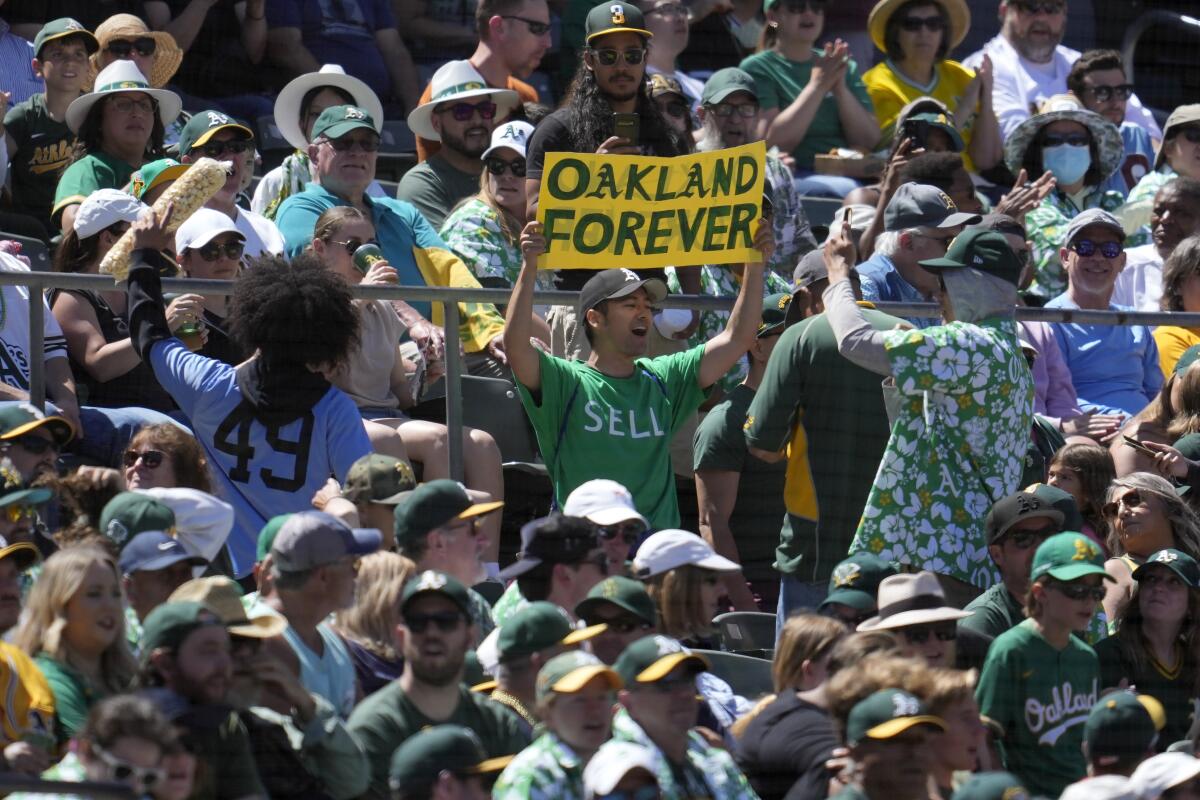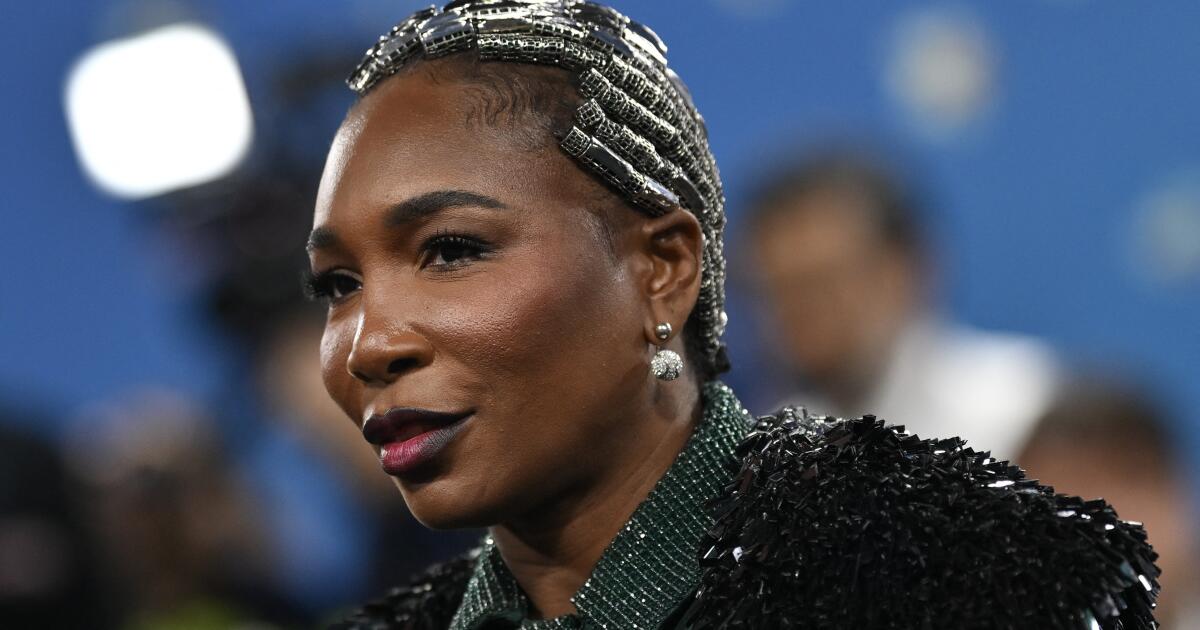Sports
MLB players with Vegas roots skeptical of A's relocation: 'It’s a terrible idea'

The Oakland Athletics are 11 weeks from extinction.
They’ll set up shop in Sacramento for three or four years, and after that they plan on making Las Vegas their new home. The A’s fans hate the idea, of course. The elected officials in Nevada, who authorized $380 million in public funding toward a new ballpark in Las Vegas, largely love the idea.
Las Vegas has a strong baseball community, and a growing cast of major league players. I spent the past few weeks asking major leaguers with Las Vegas roots what they thought of the A’s move and whether they believed the team would succeed there. Their comments were thoughtful and often nuanced — well, most of them.
“I think it’s a terrible idea,” Arizona Diamondbacks closer Paul Sewald said. “The whole thing, I fear, is going to be an abject disaster.”
Sewald said he would prefer the public funding be used for schools and roads. He said he also was skeptical that Las Vegas could support the A’s when the Raiders and 2023 Stanley Cup champion Golden Knights already are there, the two-time defending champion WNBA Aces have sold out their entire season, and it is possible that an NBA expansion team could beat the A’s to town.
“We just don’t have enough bandwidth to invest in three, four, five professional teams,” Sewald said. “We just don’t have enough people. That’s OK. We don’t have to be a city that has all four major sports.”
Bryce Harper, the Philadelphia Phillies’ All-Star first baseman, said he was unsure if the A’s would succeed in Las Vegas. He would prefer an expansion team — a team that could create its own history, just like the expansion Golden Knights.
“Everybody is still locked in on the Golden Knights,” Harper said. “It’s a tough thing to see the A’s go away from Oakland. They have so much tradition and history there: the green, the yellow, the white cleats, Eric Chavez and all those guys that played there, Barry Zito, [Mark] Mulder, Huddy [Tim Hudson], the teams they had.
“I see it in Oakland. I don’t see it in Vegas.”
Arizona Diamondbacks pitcher Paul Sewald doesn’t like the Oakland Athletics relocating to Las Vegas one bit. “The whole thing, I fear, is going to be an abject disaster,” he said.
(Darryl Webb / Associated Press)
Said Texas Rangers pitching coach Mike Maddux: “I think it would be great to have a big league team, whether it was a team that moves or an expansion team.
“I think the economy is there. It’s grown so much that it can support a team. And all people need is a reason to go to Vegas. If you’re going to go there to watch a ballgame, let that be your excuse to get out there.”
Sewald is not convinced the baseball fans of Las Vegas would become A’s fans.
“They are all Dodgers fans,” he said. “Ninety percent of the people there are from California. That’s how my dad got there. That’s how I became a Dodger fan growing up. They’re not leaving the Dodgers fan base, just because you have a team.”
Chicago White Sox outfielder Tommy Pham said he understood the skepticism. He also said he had heard it before.
“They said the same thing about the Golden Knights: Would this be a hockey town?” Pham said. “And the Golden Knights were winning, and look at it now. Everybody wears Golden Knights stuff in Vegas now.”
Maddux had no doubt the A’s would enjoy a honeymoon period in Las Vegas.
“They’ll always come at the beginning,” he said. “Then you have to sustain it.”
That is the fundamental concern of all the Las Vegans with whom I spoke for this column.
“Seeing the A’s, and going to their park the last few years and seeing how that has been kept up,” Angels All-Star pitcher Tyler Anderson said, “and how they run their team — a lot of times, they have really good teams, but it seems like, as soon as they get a good team, they start trading guys before they get too expensive.
“It’s hard as a fan to have a good connection with players and teams there. You hope they come [to Las Vegas] and it changes a little bit.”
In Oakland, the A’s have ranked last in payroll in each of the past two years and have not ranked among the top 20 in payroll since 2007. They are on pace to lose 100 games for a third consecutive season.
“No one in Vegas is an A’s fan,” Sewald said. “Why are they going to change allegiances to a team that is not trying to win?”

An Oakland Athletics fan holds up a sign protesting the team’s planned move to Las Vegas during a game at the Oakland Coliseum in June 2023.
(Jeff Chiu / Associated Press)
That, really, is the $380 million question: Has Nevada bought itself a winner?
The only one who really knows the answer is John Fisher, the A’s owner. So I asked him.
“By moving into our new stadium on the Las Vegas Strip,” Fisher said in a statement, “we will finally have the resources to significantly increase our payroll, retain our most talented young players, and make acquisitions through trades and in the free-agent market.”
A’s fans like to point out — they may be emailing me at this very moment — that Fisher’s Major League Soccer team, the San José Earthquakes, moved into a new stadium nine years ago. The Earthquakes have neither posted a winning record nor hosted a playoff game since then, and their payroll generally ranks in the bottom half of the league.
What Fisher’s teams did in the Bay Area need not be relevant in Nevada. If the A’s spend to win in Las Vegas, Pham said, they shouldn’t be concerned about winning over their new hometown.
“Shouldn’t be,” Pham said. “Shouldn’t be, man. These owners are profiting, you know? They cry broke.
“I do the same thing. I cry broke when people ask me for money but, deep down, I know I got it. It’s what people with money do.”
Times staff writer Mike DiGiovanna contributed to this column.

Sports
NFL reporter responds to fake death rumor in hilarious fashion: ‘Glitch in the matrix’

NEWYou can now listen to Fox News articles!
An internet rumor swirled last week that a longtime NFL reporter had died at the age of 40.
News of Jane Slater’s supposed death on social media, but she was quick to shut it down.
An X user posted a screenshot of a post on Facebook that showed Slater in black and white with the graphic “1980-2025” saying she had died at 40. Slater, 45, was born in 1980, but the years written in the post would mean she died at either age 44 or 45.
NFL Network sideline reporter Jane Slater stands on the sidelines prior to an NFL football game between the Seattle Seahawks and the Chicago Bears, at Soldier Field on Dec. 26, 2024 in Chicago, Illinois. (Todd Rosenberg/Getty Images)
“A veteran reporter who covered the Dallas Cowboys—having followed the team for over a decade—has passed away at the age of 40 after a tragic domestic violence incident, leaving behind a 5-year-old child. Her years of dedicated work, along with the heartbreaking circumstances surrounding her death, have left loyal fans stunned, devastated, and praying for her and her family,” the post read.
The user asked Slater, “did you pass away??”
Jane Slater speaks with T.Y. Hilton of the Dallas Cowboys after the game against the Philadelphia Eagles at AT&T Stadium on Dec. 24, 2022 in Arlington, Texas. (Cooper Neill/Getty Images)
STEELERS’ AARON RODGERS HILARIOUSLY TRASH TALKS STAR DEFENDER IN MIC’D UP MOMENT
“I don’t think so? But does this mean there is (a) glitch in the matrix? I’m gonna wrap myself in bubble wrap until NYE,” Slater joked.
If there is one thing the Facebook post got correct, it’s that Slater does mainly cover the Cowboys for the NFL Network.
NFL Network reporter Jane Slater on the sideline prior to an NFC Wild Card Playoff game between the Tampa Bay Buccaneers and the Dallas Cowboys at Raymond James Stadium on Jan. 16, 2023 in Tampa, Florida. (Perry Knotts/Getty Images)
Prior to joining in 2016, Slater worked for ESPN and the Longhorn Network, having attended the University of Texas. She also hosted a radio show in Dallas.
Follow Fox News Digital’s sports coverage on X, and subscribe to the Fox News Sports Huddle newsletter.
Sports
It’s love, set and match: Tennis icon Venus Williams weds actor, model partner in Florida

Tennis legend Venus Williams wed Danish model and actor Andrea Preti over the weekend in Florida, the new bride announced in a shared post.
An Instagram post from Vogue Magazine’s Weddings section announced the nuptials, with the message garnering more than 30,000 likes as of Tuesday afternoon.
“We all love each other so much,” Williams, 45, said in the Vogue post. “It was just the happiest, most beautiful, sweetest day.”
The post was scant on details other than the event took place over five days in and around the couple’s home in Palm Beach Gardens.
An email for comment to representatives for Williams and Preti, 37, was not immediately returned.
The couple met at 2024 Milan Fashion Week and began texting shortly after, according to Vogue.
The couple eventually became engaged on Jan. 31 in Tuscany, according to Vogue. That detail was confirmed in July during what was a historic month for Williams.
The Compton native defeated 23-year-old Peyton Sterns 6-3, 6-4 in the first round action of the D.C. Open after a 16-month hiatus from singles matches.
In victory, Williams became the second-oldest woman to win a tour-level singles match, trailing only fellow legend Martina Navratilova, who was 47 when she won in 2004.
“Yes, my fiance is here, and he really encouraged me to keep playing,” Williams told the Tennis Channel’s Rennae Stubbs in a post-match interview. “There were so many times where I just wanted to coast and kind of chill. … He encouraged me to get through this, and it’s wonderful [for him] to be here. He’s never seen me play.”
Preti has written, acted and directed in a handful of films, primarily in Italy.
The wedding was the second for the couple, who also held a ceremony in Italy in September.
Sports
Lindsey Vonn qualifies for fifth Winter Olympics

NEWYou can now listen to Fox News articles!
As Philip Rivers has shown he could still tear up the NFL at age 44, American Olympic legend Lindsey Vonn has also proven that age is just a number.
Vonn, 41, qualified for the 2026 Milan Cortina Games, Team USA announced on Tuesday. It will be the fifth Winter Olympics that she competes in.
United States’ Lindsey Vonn reacts at the finish area of an alpine ski, women’s World Cup downhill, in Val D’Isere, France, Saturday, Dec. 20, 2025. (AP Photo/Pier Marco Tacca)
Vonn had an impressive run at the World Cup in France over the weekend. She was third in super-G, hitting a high speed of 71 mph. It was her second consecutive podium finish after she was third in downhill. It was the 142nd podium finish in her World Cup career.
“I am honored to be able to represent my country one more time, in my 5th and final Olympics!” she wrote in a post on Instagram. “When I made the decision to return to ski racing, I always had one eye on Cortina because it’s a place that is very, very special to me. Although I can’t guarantee any outcomes, I can guarantee that I will give my absolute best every time l kick out of the starting gate. No matter how these games end up, I feel like I’ve already won.
US OLYMPIANS MADISON CHOCK, EVAN BATES SEND MESSAGE TO OPPONENT WHO TOOK THEIR GOLD BEFORE DISQUALIFICATION
United States’ Lindsey Vonn celebrates on the podium after taking third place in an alpine ski, women’s World Cup downhill, in Val D’Isere, France, Saturday, Dec. 20, 2025. (AP Photo/Pier Marco Tacca)
“I am grateful for how the season has gone so far, but I am just getting started. See you in Cortina!”
Vonn has already put together an enviable career in skiing.
She won a gold medal in the 2010 Vancouver Games and two bronze medals in Pyeongchang in 2018. She’s also taken home two gold, three silver and two bronze medals in the World Championships.
The Minnesota native also has 83 World Cup wins and several International Ski and Snowboard Federation (FIS) Crystal Globes.
Notably, she’s back competing for gold after being away from the sport for five years.
Austria’s Cornelia Huetter, left, winner of an alpine ski, women’s World Cup downhill, celebrates on the podium with second-placed Germany’s Kira Weidle Winkelmann, left, and third-placed United States’ Lindsey Vonn, in Val D’Isere, France, Saturday, Dec. 20, 2025. (AP Photo/Pier Marco Tacca)
CLICK HERE TO DOWNLOAD THE FOX NEWS APP
The Winter Olympics will begin on Feb. 6 and run through Feb. 22.
The Associated Press contributed to this report.
Follow Fox News Digital’s sports coverage on X and subscribe to the Fox News Sports Huddle newsletter.
-

 Iowa1 week ago
Iowa1 week agoAddy Brown motivated to step up in Audi Crooks’ absence vs. UNI
-

 Maine1 week ago
Maine1 week agoElementary-aged student killed in school bus crash in southern Maine
-

 Maryland1 week ago
Maryland1 week agoFrigid temperatures to start the week in Maryland
-

 New Mexico1 week ago
New Mexico1 week agoFamily clarifies why they believe missing New Mexico man is dead
-

 South Dakota1 week ago
South Dakota1 week agoNature: Snow in South Dakota
-

 Detroit, MI1 week ago
Detroit, MI1 week ago‘Love being a pedo’: Metro Detroit doctor, attorney, therapist accused in web of child porn chats
-

 Health1 week ago
Health1 week ago‘Aggressive’ new flu variant sweeps globe as doctors warn of severe symptoms
-

 Maine1 week ago
Maine1 week agoFamily in Maine host food pantry for deer | Hand Off


















